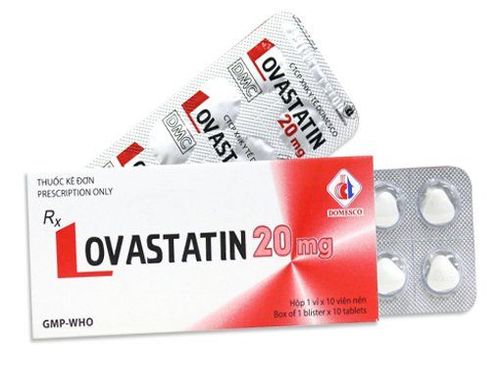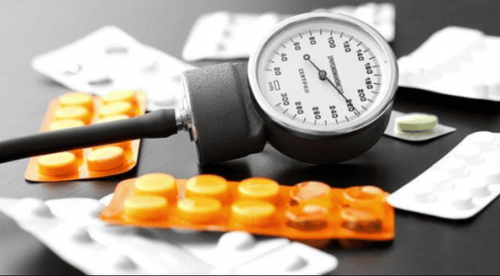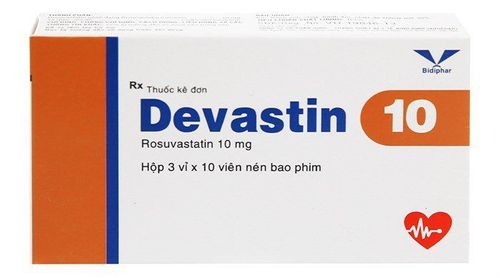This is an automatically translated article.
Drug interaction is an important issue in the treatment of co-morbid diseases, which can cause dangerous toxicity, reducing and losing the effect of drugs. To avoid the use of many dangerous drugs, users need to know the drug interactions to know how to use them correctly and effectively.
1. Clarithromycin and Calcium channel blockers, statin drug class
The antibiotic clarithromycin used together with antihypertensive drugs by vasodilating through calcium channel blockers such as amlodipine, felodipine can cause hypotension and acute renal failure. In addition, other macrolide antibiotics can also have this interaction when used concurrently with calcium channel blockers, including erythromycin. The antibiotic azithromycin is the drug of choice when a macrolide and calcium channel blocker are combined.
In addition, serious drug interactions can occur when clarithromycin is used with statins (especially simvastatin, lovastatin), which increase the toxicity of statin drugs. If used, monitor for signs of muscle toxicity such as pain, muscle weakness and Creatinine Kinase (CK) levels.
MORE: Common dangerous drug interactions
2. Warfarin and paracetamol, the drug prednisone
People using the anticoagulant warfarin are often advised to choose paracetamol for pain relief. However, the interaction between warfarin and paracetamol is still not very well known. Some reviews suggest that regular use of paracetamol increases the INR. Therefore, patients on warfarin should be closely monitored and the INR should be assessed after 3-5 days when the patient is started on daily paracetamol.
If the use of warfarin with prednisone increases the INR, then short-term use of prednisone does not need to adjust the dose of warfarin.
3. NSAID and antihypertensive drugs, heparin
When using NSAIDs (non-steroidal anti-inflammatory drugs) together with antihypertensive drugs, reducing the antihypertensive effect of these drugs, especially diuretics, ACE inhibitors, inhibitors angiotensin II receptor. In addition, NSAIDs may increase the risk of acute renal failure when co-administered with ACE inhibitors and angiotensin II receptor blockers.
If using an NSAID with heparin increases the risk of bleeding, the patient should discontinue the NSAID before starting heparin or low-molecular-weight heparin, if possible.
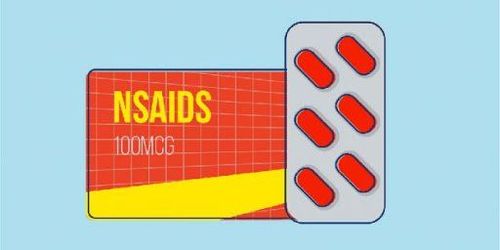
Cần thận trọng khi kết hợp các cặp tương tác thuốc NSAID
4. Digoxin and Amiodaron, calcium or magnesium
Using digoxin and amiodarone together increases blood levels of digoxin, which can cause poisoning. Digoxin dose should be reduced by 1/2 to 1/3 when initiating amiodarone and adjusted after 1 or 2 weeks, possibly 1 month after stopping amiodarone. Continue to monitor for signs of toxicity such as vomiting, nausea, cardiac arrhythmias.
Digoxin used with calcium or magnesium increases the risk of arrhythmias, possibly fatal if calcium and magnesium are given intravenously at the same time as digitalis derivatives. If necessary, only oral calcium and magnesium can be combined, but close monitoring is required.
5. Diltiazem and antibiotics Clarithromycin or Erythromycin, amiodarone
When diltiazem and the antibiotics clarithromycin or erythromycin are used together, there is an increased risk of abnormal heart rhythms, which can be fatal. Avoid combination, if in case it is necessary, monitor and adjust the dose of diltiazem if necessary.
When diltiazem and amiodarone are used together, increased concentrations of diltiazem in the body can cause bradycardia, sinus arrest, and atrioventricular block. Therefore, this combination is contraindicated in patients with sinus node insufficiency syndrome or partial atrioventricular block.
MORE: Common Psychotropic Drug Interactions
6. Potassium chloride and ACE inhibitors, spironolactone
Combination of potassium chloride and ACE inhibitors increases the risk of hyperkalemia, cardiac conduction disturbances. Concomitant use of these two drugs should be avoided, especially in elderly patients, those with a history of renal and heart failure.
Potassium chloride and potassium-sparing diuretic spironolactone, if combined, will increase blood potassium, severe cases can lead to kidney failure, muscle paralysis, irregular heartbeat, cardiac arrest. Co-administration only when necessary and close monitoring of serum potassium is required.
7. Colchicine and statins, clarithromycin or erythromycin antibiotics, fluconazole
As the use of colchicine and statins increases the toxicity of simvastatin, the combination of these two groups should be avoided, if necessary, monitored for statin toxicity and reduced to the lowest effective statin dose.
Colchicine combined with the antibiotic clarithromycin or erythromycin and the antifungal drug fluconazole increases the toxicity of colchicine, to dangerous levels. Therefore, co-administration should be avoided, especially in patients with renal impairment, and closely monitored if co-administration is necessary.
8. Corticosteroids and Non-Steroidal Anti-Inflammatories
If these two anti-inflammatory drugs are combined, they will increase the side effects on the gastrointestinal tract. Therefore, avoid unnecessary use.
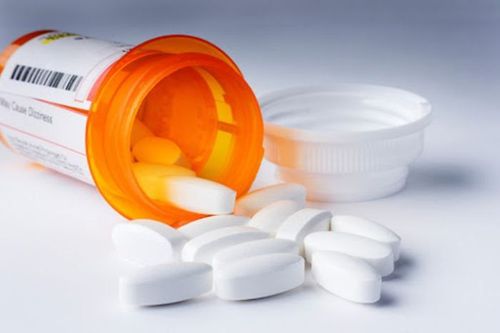
Corticoid có thể gặp tương tác thuốc nguy hiểm khi kết hợp sai
9. Combination of NSAID anti-inflammatory drugs
Such combinations increase the serious side effects of NSAIDs, especially those on the gastrointestinal tract. Therefore, it should be noted that the combination should not be combined, especially in people with a history of gastric disease.
10. Spironolactone and ACE inhibitors
Spironolactone belongs to the group of potassium-sparing diuretics, ACE inhibitors (enalapril, perindopril, captopril, lisinopril, ..) this is a group of lowering blood pressure if the risk of hyperkalemia is combined. life, especially kidney failure.
11. Ceftriaxone and calcium-containing intravenous solutions
The antibiotic ceftriaxone is commonly used in the treatment of bacterial infections, but if this antibiotic is used together with calcium-containing infusion solutions such as calcium chloride, Ringer lactate will precipitate ceftriaxone - calcium has been detected in the lungs. and neonatal kidneys.
12. Quinolone antibiotics (levofloxacin, moxifloxacin) and macrolide antibiotics, fluconazole.
When combined increases the risk of prolongation of the QT interval on the electrocardiogram, dangerous torsades de pointes. The combination of these drugs should be avoided, if necessary, caution and close ECG monitoring, especially in patients with risk factors for torsade de pointes.
13. Thyroid hormone and proton pump inhibitors
If the simultaneous use of thyroid hormone and proton pump inhibitors can interfere with thyroid hormone absorption, it is possible that patients who were previously well controlled on thyroid hormone supplements may experience decrease in hormone levels that cause hypothyroidism. If a course of proton pump inhibitors such as omeprazole is used for a period of time with thyroid hormone, thyroid function should be rechecked.
There are many pairs of drugs that can interact with each other causing adverse effects for users. Therefore, we need to control the drugs put into the body well. Avoid using pairs of dangerous interactions together.
To make sure to avoid drug interactions, patients need to read the instructions carefully before using or strictly follow the doctor's instructions.
Please dial HOTLINE for more information or register for an appointment HERE. Download MyVinmec app to make appointments faster and to manage your bookings easily.




